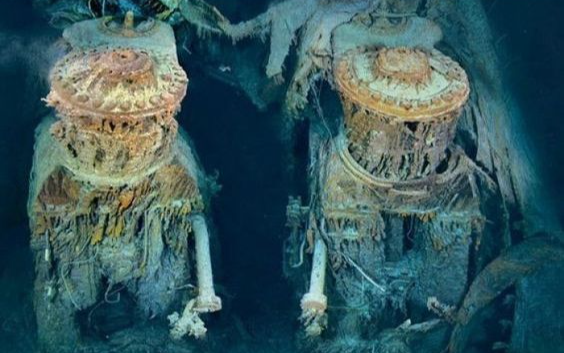Divers uncover a surprising discovery near the wreck of the Titanic
The wreck of the Titanic sits in two parts at the bottom of the North Atlantic Ocean, slowly decaying nearly 4,000 meters (13,000 feet) below the surface, but it’s not alone. A sonar blip detected around 26 years ago has now revealed there’s much more to this underwater area than previously thought.

P.H. Nargeolet, a veteran Nautile submersible pilot and Titanic diver, originally picked up the blip on echo-sounding equipment in 1996, but its origins have remained unknown.
In an expedition to the Titanic shipwreck earlier this year, Nargeolet and four other researchers went to the blip’s previously recorded location to search for the mysterious object it represented. Due to the blip’s magnitude, Nargeolet had believed he was looking for another shipwreck — he instead found a rocky reef, made up of various volcanic formations, and thriving with lobsters, deep-sea fish, sponges and several species of coral that could be thousands of years old.
“It is biologically fascinating. The animals that live there are very different to the animals that are found otherwise living in the abyssal ocean,” said Murray Roberts, a professor of applied marine biology and ecology at the University of Edinburgh in Scotland and one of the researchers on the expedition. “(Nargeolet) did a really important piece of scientific work. He thought it was a shipwreck, and it turned out, in my mind, even more amazing than a shipwreck.”
The abyssal plain is a term used to describe the ocean floor at a water depth of 3,000 to 4,000 meters (around 12,000 feet), which makes up 60% of Earth’s surface, according to Roberts. It is thought to be a featureless, muddy seabed without much structure. On a few occasions, divers have observed rocky formations on the plain. Since the recent discovery near the Titanic, Roberts now believes such features might be more common than previously thought.
Rocky areas may also help explain the distances that sponges and corals travel across the ocean floor, which has always been a mystery to scientists. Within the muddy environment where they are typically observed, there are few hard surfaces for these species to latch onto to grow and reproduce.
“Sometimes they turn up in places where we think, ‘Well, how did they get there? They don’t live long enough to get there,” Roberts said. “But if there are more of these rocky places, these stepping stones, than we ever thought, I think it could help us understand the distribution of these species across the ocean.”
The researchers are currently working on analyzing images and videos taken of the reef during their dive, and they intend to share their findings to improve the scientific community’s collective knowledge of deep-sea life. Roberts also hopes to link this discovery to a wider Atlantic Ocean ecosystem project he leads, that will allow for further study and protection of the fragile ecosystem within the reef.
There is another sonar blip near the Titanic that Nargeolet is hoping to identify on a future expedition. It was recorded in the same survey he performed years ago, in between the wreck of the Titanic and the newly uncovered reef — now named the Nargeolet-Fanning Ridge after him and the 2022 expedition’s mission specialist Oisín Fanning. Nargeolet expects whatever it is to be even bigger than this reef.















